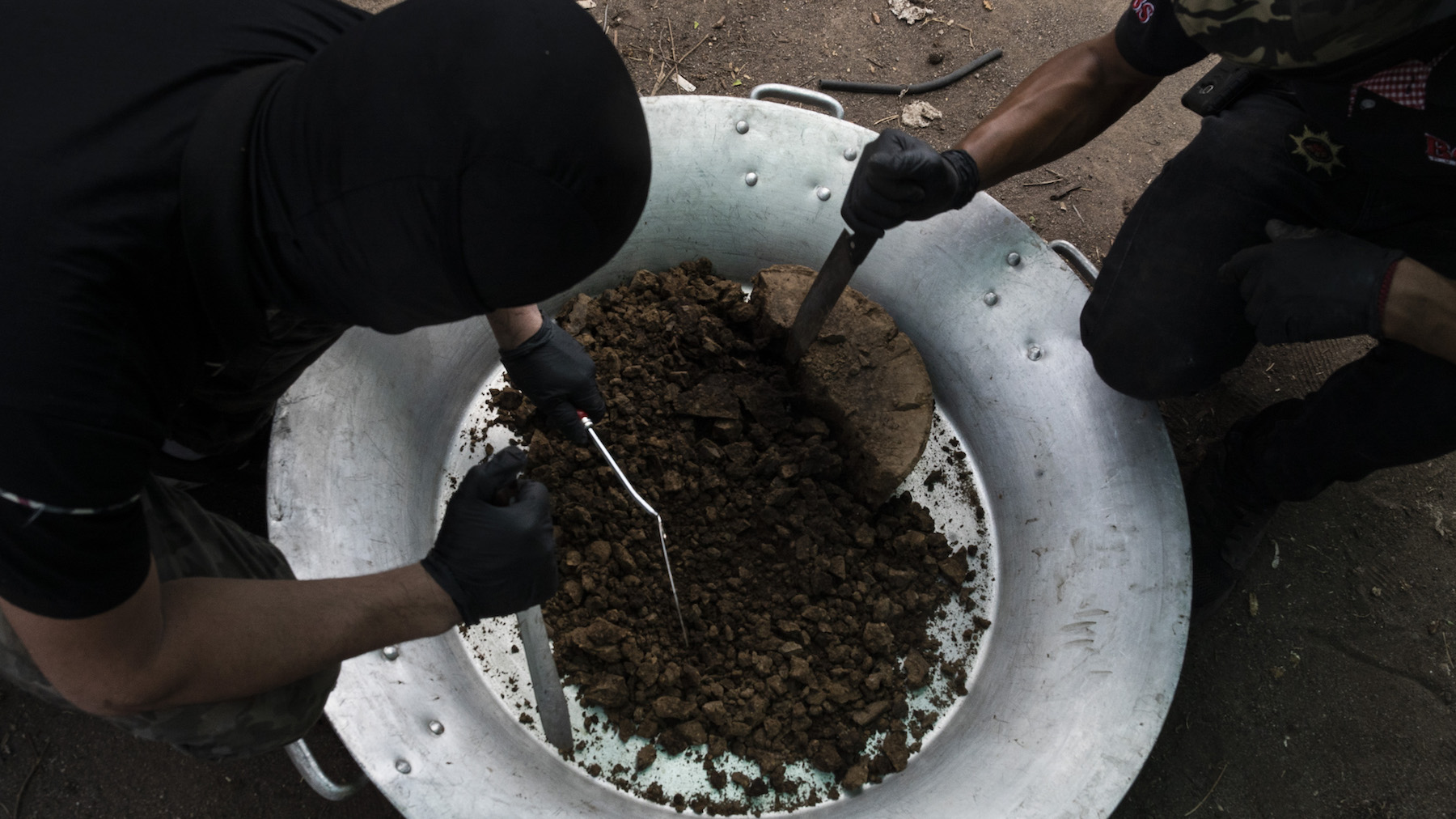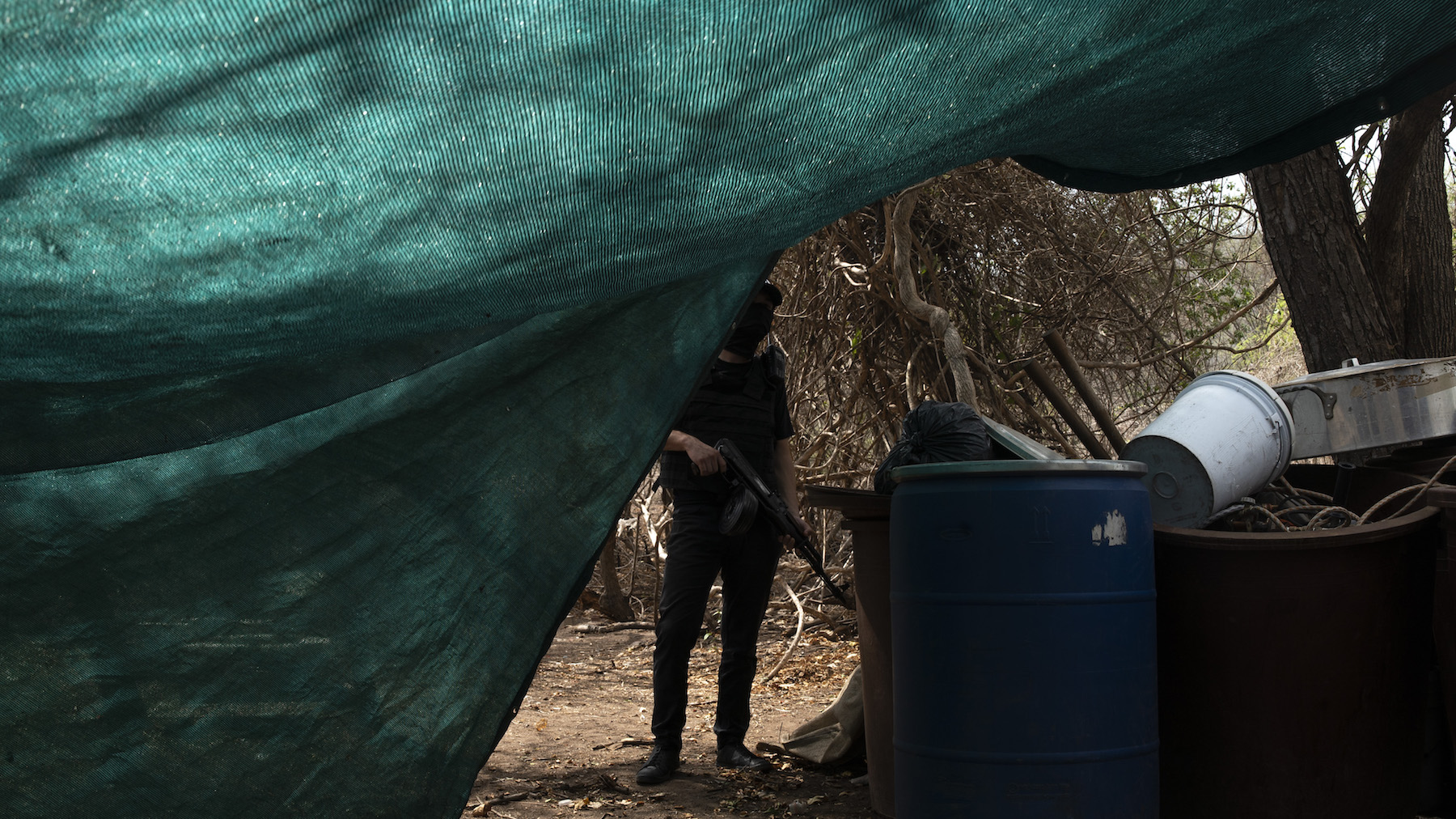Jesús is a drug trafficker allied with the Sinaloa cartel. Last week, he and other traffickers received a WhatsApp message from the cartel’s top boss, Ismael “El Mayo” Zambada, who declared that wholesale prices were going to increase for methamphetamine.
“Mayo sent this announcement saying, ‘Everyone is going to sell a pound of crystal for 15,000 pesos ($600) from now on because of the shortage. Before that, it was 2,500 pesos ($100),” said Jesús, who spoke on condition of anonymity. “The message also said, ‘If you don’t obey, pay attention to the consequences.’ ”
Videos by VICE
The stated reason for the sixfold price hike is the novel coronavirus pandemic. The cartel supply chain is complex and international. The raw chemical ingredients used for manufacturing methamphetamine and fentanyl are mainly sourced from China, the epicenter of the outbreak. In a recent interview with VICE News, Jesús said his “cooks” were already running low on some of the essential materials used in the drug manufacturing process.
“Because of the coronavirus, there is very little distribution or importation from China to Mexico City.”
The coronavirus, which causes the disease COVID-19, has thrown a massive wrench in the gears of the global economy. Seemingly every industry that relies on China for labor or raw materials has been affected, most notably companies that make medical supplies and pharmaceuticals, which are essential for treating sick people and containing the spread of the virus. Drug cartels have not been immune.
Jesús said that normally his cooks keep about a month’s supply of chemicals on hand, but they were already running low and having difficulty restocking. A cook from another Sinaloa cartel faction, who identified himself as Enrique, reported a similar problem, saying the price of acetone, which is used to manufacture heroin, has more than doubled over the past 15 days, climbing from around $60 for 20 litres to $150.
“It’s changed a lot,” Enrique said. “The prices are very high right now. Because of the coronavirus, there is very little distribution or importation from China to Mexico City. It’s difficult to get the chemicals, the juice. You can get them, but the prices are going way up for everyone.”
Enrique said he’s heard rumors that a kilo of fentanyl, which used to sell wholesale in Sinaloa for 870,000 pesos ($35,000), now costs 1 million pesos ($42,000). The powerful synthetic opioid, which has fueled the skyrocketing rate of overdose deaths in the U.S., once flowed directly from China to the U.S. through the international mail system. But a crackdown by Chinese authorities that began last May has stimulated production in Mexico, with the Chinese supplying the loosely regulated precursors necessary for the cooking process.
READ: How the CDC botched basic science in its attempt to make a coronavirus test.
One of the hubs for the Chinese fentanyl trade is Hubei province, where COVID-19 has killed more than 3,100 people since January. One trafficker indicted by the U.S. Department of Justice, Yan Xiaobing, has a company based in Wuhan. According to Ben Westhoff, author of the book “Fentanyl Inc.,” provincial authorities allowed Yan’s company, which makes a wide range of other chemicals, to operate in a special economic development zone, which provided tax breaks. Beijing has refused to arrest or extradite Yan, saying there’s no evidence he broke Chinese law.
The arrival of fentanyl has already disrupted the Mexican heroin market, causing the price of opium poppy gum — a thick black goo that is refined into heroin — to plummet from around $1,800 per kilo a few years ago to $320 in recent months. Cartels have found it far more lucrative to manufacture fentanyl, since it can be made year-round with chemicals that, until recently, were cheap and readily available. Heroin, by contrast, requires huge poppy fields, which can only be harvested seasonally, by farmers who must be paid for their labor.

Mexican cartels have long dominated the crystal meth trade, especially since the mid-2010s, when the U.S. began to tightly control cold medicines that contain pseudoephedrine, which Americans were using to manufacture meth in small-scale local labs. Given a monopoly on the U.S. meth market, the cartels ramped up production, relying on Chinese suppliers for ephedrine and other essential chemicals. Mexican authorities have busted numerous large, clandestine meth labs capable of producing hundreds of kilos per month. High-purity meth is now cheap and readily available across the U.S.
Jesús speculated that the meth price hike ordered by El Mayo was more about opportunism than the chemical shortage. He said that as meth production has scaled up in recent years and competition from rival cartels has increased, profit margins have dwindled.
“It’s just an excuse to raise the prices,” he said. “It’s no longer a business anymore like it used to be. They were investing $100,000 and they got $200,000. It’s a lot of money, but it’s not a lot of profit for the risk. They want to keep investing $100,000 but get $1.5 million instead.”
DEA spokesperson Katherine Pfaff said the agency is tracking whether the coronavirus outbreak is affecting illicit drug markets, but it’s too early to say for certain what’s going on.
“It’s difficult to assess the situation,” Pfaff said. “DEA is continuing to monitor these things. It’ll be sometime until we have a better sense of whether or not the health emergency has impacted the drug trade.”
The situation in China already seems to be improving, with the country reporting no new domestic cases of COVID-19 since last Thursday. Workers are beginning to return to their jobs and factories are resuming production, but the crisis is in some ways just beginning. The outbreak has now migrated abroad to the U.S., Europe, and Latin America, which could pose new challenges to the global economy.
The U.S. and Mexico announced new restrictions last week on cross-border travel, a move that could mean new challenges to drug traffickers, who mainly smuggle their product across the border hidden in cars and trucks.

One trafficker who works for El Mayo in the border city of Mexicali told VICE News that last week they went from smuggling around 15 kilos of meth and heroin per week to five due to lack of supply and increased enforcement on the U.S. side. The trafficker was also worried about being unable to smuggle money and weapons into Mexico from the U.S.
Bryce Pardo, an associate policy researcher at the RAND Corporation who studies illicit drug markets, said the chemical supply chain could be further disrupted if seaports are forced to shut down or limit operations in response to more outbreaks in the U.S. in Mexico.
“There’s going to be a lot of product sitting in ports, because there’s not going to be enough people — dockworkers, stevedores, those guys — to unload it,” Pardo said. “The problem might get fixed in Asia, but then on the intake side in the U.S. and Mexico, there’s going to be this lag here because people can’t go to work and offload products, legitimate and illegitimate.”
There are already reports of drug prices increasing on dark web marketplaces due to chemical shortages in China, along with indications that Mexican cartels are hurting for business in other ways. One news outlet reported that a cartel in Mexico City, La Unión de Tepito, had stopped receiving shipments of counterfeit luxury goods, such as knockoff shoes and purses.
READ: El Chapo’s conviction changed everything and nothing about the war on drugs.
Pardo also noted that COVID-19 could be devastating for drug users in the United States. While recreational users might curtail their habits because they are social distancing and no longer partying with friends, people with serious substance-use disorders will continue to seek out drugs regardless of the cost.
“Those that are chronic drug users, people using heavier drugs like methamphetamine and heroin, these individuals are not in good health to begin with,” Pardo said. “They live on the economic and social fringes. It’s very likely that corona will kill a lot of them, and that’s going to depress demand because they’re the ones that are consuming the most by volume.”
There are currently 316 cases of COVID-19 and two deaths in Mexico, though, like in the U.S., the lack of widespread testing for the disease may be obscuring the true extent of the outbreak. Enrique said he thought the virus might be a “smokescreen” or an excuse by cartel leaders to raise prices, but he was also nervous.
“Everyone is afraid. We’re hearing all sorts of things,” he said. “Some say it’s just a simple flu; others say it can kill you. I don’t know what to believe.”
Jesús, on the other hand, was skeptical about the risks posed by the virus.
“To me it’s all lies,” he said. “I don’t believe in that. I think it’s all busllhit, personally. I don’t know anyone who has been affected by coronavirus.”
As for his future business prospects, Jesús was optimistic. His operating costs might increase in the short term, which will force him to raise prices, but the costs will just trickle down.
“As a provider, it’s good because you make more money, but my clients are going to have to increase the price per gram in the street, and there could be people that might not like that,” he said. “But since they are addicted to crystal meth, they will complain, but in the end they will end up paying whatever we ask.”
Miguel Angel Vega contributed reporting.
Cover: Sinaloa cartel drug cooks prepare a mixture of heroin and fentanyl in a clandestine lab near Culiacán in June 2019. (Photo by Miguel Fernández-Flores/VICE News)
More
From VICE
-

A DEA agent (Photo by RJ Sangosti/MediaNews Group/The Denver Post via Getty Images) -

Photo by MANDEL NGAN / AFP. -

beaches along the Cancun Hotel Zone. Photo by Artur Widak/NurPhoto/Shutterstock. -

Collage by Vice
